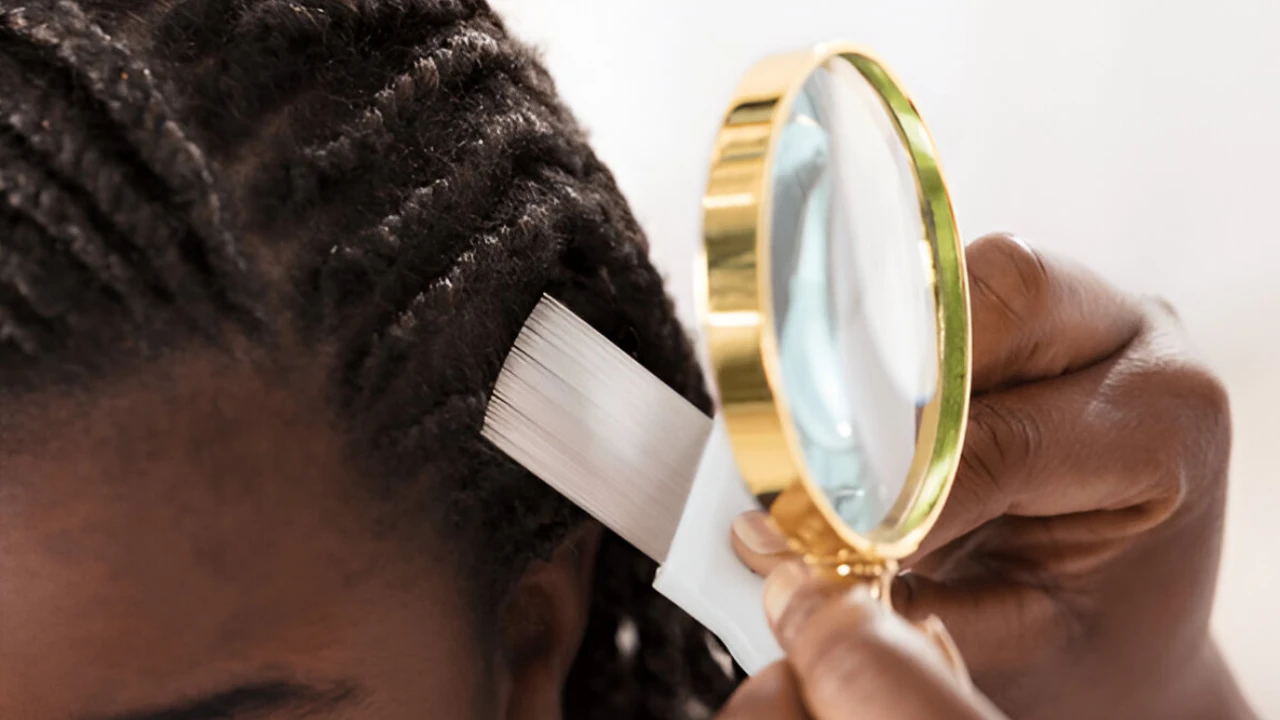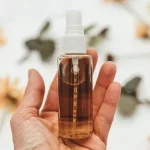Okay, real talk—have you ever been in a group chat or family gathering when someone casually drops, “Black people don’t get lice”? Or maybe you saw it in a meme, and you laughed along without thinking twice. But let’s pause for a second. Is that really true? Or is it just another myth floating around?
In this honest, heart-to-heart guide, we’re diving deep into the world of head lice—yes, those tiny, unwelcome guests that set up shop on our scalps. We’ll uncover whether Black folks can get lice, explore why it might feel like they don’t, and—most importantly—share real, practical tips on how to spot, treat, and prevent infestations in coily hair textures. Think of this as grabbing iced tea with your best friend: open, friendly, judgment-free, and maybe with a dash of humor. Ready? Let’s jump in!
Understanding Head Lice: The Basics
What Exactly Are Head Lice?
Head lice (Pediculus humanus capitis) are tiny, wingless insects—about the size of a sesame seed—that feast on tiny droplets of blood from your scalp. They’re master hitchhikers, clinging to hair shafts with their six segmented legs and erect claws. While they don’t carry diseases, the itching and irritation can feel intense, not to mention the social stigma that often follows an infestation.
How Do Lice Spread?
Contrary to popular belief, lice don’t jump, fly, or swim. They crawl—and they spread almost exclusively via direct head-to-head contact. Think slumber parties, sports practices, or that shared selfie moment where heads touch. Sharing combs, hats, scarves, or even headphones can also transfer lice, but close contact is the main culprit.
Here’s a quick breakdown:
- Head-to-Head Contact: #1 transmission route.
- Shared Items: Combs, brushes, hair accessories, hats, helmets.
- Rare Routes: Furniture or linen—only if lice fall off a head and remain alive for 24–48 hours.
Can Black People Get Lice? Debunking the Myth
Origins of the “No Lice” Belief
Have you ever wondered where this belief even started? It likely comes from observing that lice infestations appear less frequently in communities with coily hair textures, leading to the assumption that Black hair is somehow “immune.” But assumptions aren’t facts. Deeply rooted in anecdote rather than science, the myth persists because it feels good to believe we’re “safe.” Unfortunately, myths can leave us unprepared when reality bites.
To dive deeper into how myths around lice and hair cleanliness started—and why they still stick—check out our article on Do Lice Like Dirty Hair? Debunking Myths and Facts for more evidence-based insights.
Scientific Evidence: Prevalence and Studies
Let’s bring in some hard data. According to reports by the Centers for Disease Control and Prevention, lice prevalence rates among U.S. schoolchildren vary widely by region, socioeconomics, and hair care practices—more than by race alone. One community study found infestation rates of around 15% in primarily White populations versus 5–7% in primarily Black populations. That’s a difference, sure—but it doesn’t mean “zero.”
Another study published in the Journal of Medical Entomology noted that while lice claws have a tougher time gripping coily strands, they adapt over generations. Lice are survivors. They evolve to cling better, regardless of hair texture.
Why Coily Hair May Deter Lice
The Role of Hair Texture
Let’s do a quick thought experiment. Imagine you’re hiking through a dense thicket versus strolling on a straight sidewalk. Which is easier? Most of us would say the sidewalk. That’s exactly what researchers see when lice try to navigate tight coils: more obstacles. Coily hair creates a kind of “natural barrier” that makes it harder for lice to move, but it’s not impenetrable.
Here’s what really happens:
- Twists and Turns: Lice claws struggle to find a firm hold around curly bends.
- Spacing: Irregular spacing between curly strands can slow them down.
- Sheen & Products: Oils, butters, and creams often used on coily hair can add a slippery layer that makes gripping trickier.
Hair Care Practices and Products
Have you ever slathered on a rich shea butter or coconut oil? That extra moisture can make hair feel amazing—and might give lice a slip ’n slide they can’t handle. Protective styles like box braids, twists, and Bantu knots also create fewer loose strands for lice to grab. But—and this is a big but—none of these factors guarantee total protection. Lice have been found in tightly braided hair, and oils might just slow them down, not block them entirely.
Identifying Lice in Coily Hair
Signs and Symptoms to Watch
Spotting lice early makes treatment faster and less stressful. Here’s what to look for:
- Itching: Often behind the ears and at the nape of the neck—anywhere lice hang out.
- Visible Nits: Tiny, oval eggs attached to hair shafts, usually within ¼ inch of the scalp.
- Live Lice: Small (1–3 mm), fast-moving dots—sometimes you’ll catch them scuttling away.
- Sores or Scabs: From excessive scratching, which can lead to infection.
Pro tip: A bright flashlight and a magnifying mirror are game-changers when combing through dense coils. Section hair into small parts, clip them up, and sweep a fine-tooth nit comb from root to tip. Feel that little tickle? Check the comb—and celebrate when you come up clean!
Challenges in Detection
Dark, coily hair can be a ninja’s playground for lice. Nits blend right in, looking like flakes of dandruff or product buildup. Unlike straight hair, where nits might glint in the light, coily textures hide them. That’s why routine checks are critical—think weekly inspections, especially after sleepovers or group events.
Treating Lice in African American Hair
Over-the-Counter and Prescription Treatments
When it comes to treatment, think of your scalp as a battlefield. You need the right arsenal:
| Treatment Type | Examples | Pros & Cons |
|---|---|---|
| Pyrethrin-based | Permethrin 1%, Pyrethrins with Piperonyl Butoxide | OTC, effective—but resistance is growing in some areas. |
| Synthetic Insecticides | Benzyl Alcohol Lotion, Malathion Lotion | Prescription-only; effective against resistant lice; may irritate skin. |
| Silicone-based | Dimethicone Lotions, Lice Shield | Smothers lice; fewer resistance issues; generally safe. |
Follow these steps for best results:
- Read Instructions Carefully: Different products have different application times.
- Repeat Treatment: Most call for a second application 7–10 days later to kill newly hatched nymphs.
- Combine with Combing: Use a nit comb after treatment to remove dead lice and nits.
Natural and Home Remedies—Do They Work?
We all love a good DIY hack, but let’s be real: most home remedies lack strong clinical support. That said, some people swear by them:
- Tea Tree Oil: Antimicrobial properties—but can irritate sensitive scalps; dilute it.
- Coconut Oil: Smothers lice—but may need hours under a shower cap to be effective.
- Mayonnaise or Petroleum Jelly: Thick barrier method—effective only if applied thoroughly and left on for 8–12 hours.
If you try a natural remedy, don’t skip the combing. Section hair, apply your chosen method, cover with a cap, and comb out any survivors. And if itching continues after a week, consider switching to an FDA-approved treatment.
Special Considerations for Coily Hair
Choosing the Right Tools
Never underestimate the power of a good nit comb. Look for:
- Metal Teeth: Won’t warp or bend like plastic combs.
- Fine Spacing: Teeth should be close together (0.2–0.3 mm) to catch nits.
- Ergonomic Handle: Combing through thick hair can be a workout—comfort matters!
Protective Hairstyles During Treatment
After treatment, you might worry about hair breakage from combing. Protective styles can help:
- Loose Braids or Twists: Keep hair tangle-free and reduce manipulation.
- Silk or Satin Scarves: Reduce friction while you sleep.
- Low-Tension Styles: Avoid tight ponytails or buns that stress the edges.
Preventing Lice Infestations: Your Game Plan
Daily and Weekly Habits
Prevention isn’t one-and-done—it’s a lifestyle:
- Weekly Checks: Section hair, use a bright light, and comb through.
- Clean Linens: Wash pillowcases, scarves, and hats weekly in hot water (130°F+).
- Mindful Sharing: Politely decline sharing combs, brushes, towels, or hats.
- School & Daycare Alerts: Inform teachers or caregivers at first sign of itching.
Community Education and Awareness
Stigma thrives in silence. Let’s start normalizing conversations about lice:
- Share Facts: Post accurate info on social media—like the CDC’s official guide.
- Host Workshops: Invite a trichologist or school nurse to your next community meeting.
- Support Each Other: If you know someone dealing with lice, offer help instead of judgment.
Broader Context: What Race Gets Lice the Most?
If you’ve ever Googled “what race gets lice the most,” you’ll find mixed answers. Studies often show higher infestation rates in communities with straight or wavy hair—but remember, prevalence reflects access to resources, cultural practices, and socioeconomic factors, not inherent susceptibility.
For example, schools in higher-income areas might see fewer cases simply because parents can afford prompt treatments and lice-prevention products. Conversely, under-resourced communities may experience repeat infestations due to limited access to reliable treatments. So instead of framing it as a racial issue, let’s view lice through the lens of public health equity.
The Emotional Side: Coping with Stigma and Stress
Discovering you or your child has lice can feel like a punch to the gut. The itching is uncomfortable, sure—but the social stigma can sting even more. You might worry about judgment from friends, teachers, or family. Here’s how to handle the emotional rollercoaster:
- Normalize the Conversation: Lice are common—millions of cases every year in the U.S. alone.
- Stay Informed: Knowledge reduces anxiety. The more you know about prevention and treatment, the less scary it feels.
- Be Gentle: Rashes or redness from scratching can embarrass kids and adults alike. Reassure them it’s temporary.
- Laugh It Off: Okay, maybe not laugh at the infestation—but find humor in the absurdity. You’re fighting tiny vampires, after all!
Call to Action: Let’s Talk and Share
So, can Black people have lice? Absolutely. Coily hair might make it feel less common, but it’s by no means a protective shield. We’ve covered the science, busted myths, and handed you the tools to spot, treat, and prevent infestations.
Now I’d love to hear from you:
- Have you ever dealt with lice in coily hair? What worked (or didn’t) for you?
- Do you have a favorite natural remedy that actually did the trick?
- Any tips for making nit-combing more bearable?
Drop your thoughts and stories in the comments below—let’s build a community that supports, educates, and most importantly, laughs together through the itchy times. And if you have any burning questions, shoot them over. I’m here, cheering you on toward a lice-free life!
Conclusion
Head lice don’t discriminate. They’ll climb onto any scalp they can reach—coily, straight, curly, you name it. While Black folks might experience lower infestation rates thanks to hair texture and care practices, the risk remains real. Armed with accurate knowledge, the right tools, and a supportive community, you can tackle lice head-on (pun absolutely intended!).
Remember: early detection makes treatment smoother, patience is your best friend during combing, and open conversations break down stigma. Now go forth, inspect those strands, share the facts, and live your best, itch-free life. You’ve got this!


















Leave a Reply
You must be logged in to post a comment.